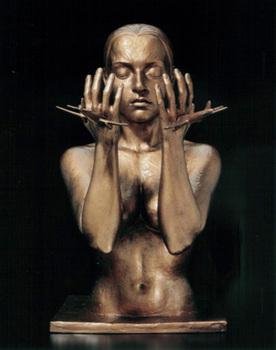
When the Taliban dynamited the two Bamiyan sculptures of the Buddha I was appalled, but it seemed to be a distant atrocity. When I read about what they were doing to their women the evil seemed much closer, because for the previous few years I had been immersed in the lives of the three women from my Boston Women's Memorial commission, who engaged so fully with the restrictions of women's lives in their eras. When New York was attacked I was shocked, horrified and very angry. I wanted to go to Ground Zero and help dig, but I believed that my young son needed my presence more. I tried to organize some kind of artist's project to help, making drawings or portraits for families of the missing, but that large a project was beyond my ability to launch. So I started a sculpture. I felt fiercely determined to make as anti-Taliban a sculpture as possible.
First of all, it had to be a nude woman from our Western tradition of the allegorical female nude, representing New York City as young and strong- even tough. The image of the woman came to me when I was thinking about the Houris, the virgins who were supposed to be waiting for the terrorists in Paradise, and what a travesty that idea made of all that is truly feminine. I imagined them being greeted by this woman, instead.
Then, it had to be a sculpture of a human being that had survived an attack, wounded but alive, unlike the disintegrated Buddhas.
Now I also see that I felt free to use a powerful Christian symbol of wounds that are received as a sacred gift (symbolizing transcendence of one's individuality by identification with Christ, who is identified with all men) because in our culture a non-religious Jewish artist can use a Christian symbol and have that use be understood not as a blasphemy but as an act of reverence. I have certainly felt free in the past to mine the history of Biblical art for irreverent purposes. This was something new.